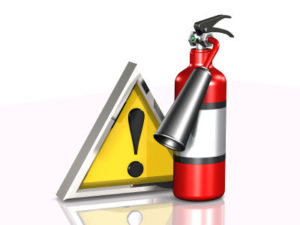A worker in a glass manufacturing facility suffered third degrees burns on legs and hands when molten glass fell on the floor and came in contact oil residue from the machines, thus igniting flames. He is a machine operator for Piramal Glass USA Inc. Unfortunately, the machine operator was not given proper fire-retardant clothing and suffered severe injuries. He has not been able to return back to work.
Piramal Glass USA could face up to $122,000 in penalties for several violations including failure to abide by the company manual that states all workers at the hot end of the production line wear fire-retardant clothing.
“It’s not enough for employers to have good policies on the books – they must abide by them. The company needs to develop and comply with a comprehensive policy on personal protective clothing,” said Bill McDonald, OSHA’s area director in St. Louis. The original news story can be read here.
An employer would never want this situation to intentionally happen. But accidents happen. Company manuals and safety programs are set in place for a reason—to protect workers and employees. How well are your policies and procedures being followed? Below are a few questions to ask yourself to help reduce accidents similar to what happened at Piramal Glass USA.
How Could You Avoid This Situation?
- When was the last time the company manual was updated? Make sure the company manual reflects any changes in company policies and procedures. As well as, regulations like the new OSHA Hazard Communication/GHS Standard. Also make sure that managers and supervisors are held accountable for following company policies.

- Are fire extinguishers readily available? Make sure all
employees are aware of fire extinguisher locations and how to use them. All fire extinguishers should be checked annually by a third party inspector.
- Do all employees have adequate personal protective equipment, including fire-retardant clothing, to complete their tasks safely? Employees should have access to PPE suitable for their specific tasks. They should be trained on when and how to wear PPE. You should have a current Hazard Assessment that identifies what PPE is required and when it is need.
- Does the facility or site have known fire hazards? Employees should be aware of all potential fire hazards. Are ignition sources identified? Are extension cords in good condition? If fire hazards become present, employees should notify management or the supervisor immediately.
- Is the area inspected for cleanliness? In the case of the machine operator, if the leaking oil had been properly cleaned up, the fire may not have been as severe. If an employee notices a spill, especially from a flammable substance, he/she should clean or notify management immediately. Also, all fire exits should be accessible at all times.
- Are safety procedures in place in case of an emergency? All employees should understand and be aware of what to do in an emergency situation. Should they render first aid? Who calls 911? Where is the nearest emergency clinic? All those questions are in the First Aid or Emergency Action Program in a company manual.
Have questions? Contact SRP Environmental to discuss how to write and implement safety programs in the company manual.

 ">
">
 ">
">